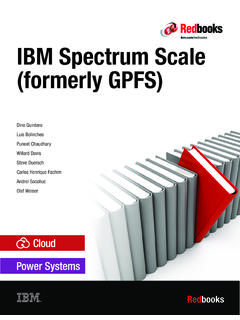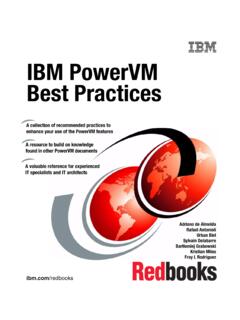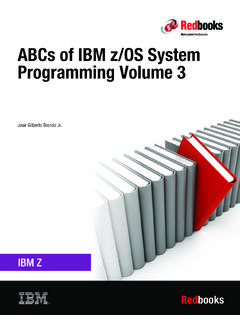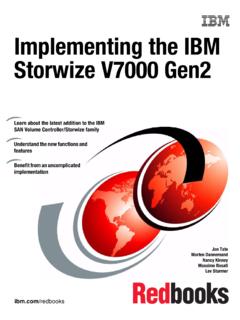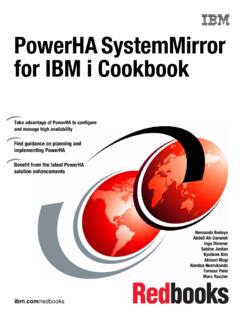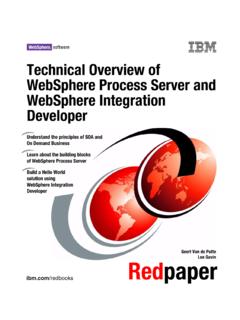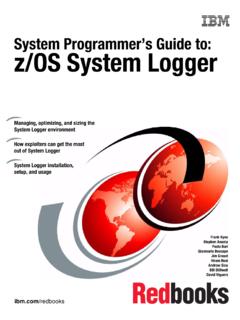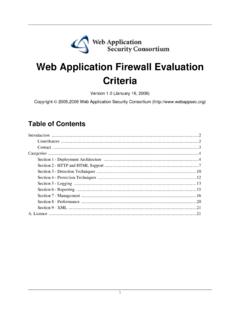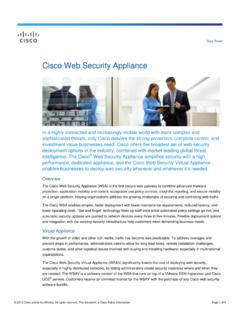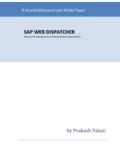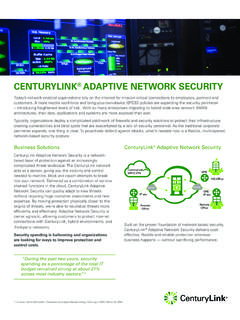Transcription of Improving Your Web Application Software …
1 Front coverImproving Your Web Application Software Development Life Cycle s security Posture with IBM Rational AppScanFrederik De KeukelaereDanny AllanAxel BueckerUnderstand how attackers select targets and turn attacks into moneyLearn the value of automated Web Application security testingDeploy IBM Rational Web Application security tools in your development life cycleRedguidesfor Business Leaders Copyright IBM Corp. 2009. All rights overviewHackers on the Internet have evolved from fame-hungry sabotage to fraud to profitable organized data and identity theft. As this evolution continues, it is important for business leaders to consider the security of their Web applications as a vital performance indicator of the success of their this IBM Redguide publication, we explain how your organization can evaluate its risk for hackers entering into your systems.
2 We also explain how your organization can implement security testing and integrate solutions to improve security and protect your information the first part of this Redguide publication, we discuss how to evaluate the risk that your organization is exposed to. We explain why your organization is the target of attacks and who is behind them. We illustrate the impact that successful attacks can have on your organization. We show the latest trends and statistics in Web Application vulnerabilities and the underground trade of stolen information. We also give a technical overview of the areas where your Application can be attacked and discuss the two most common Web Application the next part of this Redguide publication, we introduce the Software development life cycle of Web applications and illustrate how security fits into this life cycle.
3 We provide a step-by-step approach to integrating Web Application security testing into your Software development life cycle. In addition, we also show how and where you can use IBM Rational products in your Software development life cycle to improve the security of your organization based on your business conclude this guide with a business scenario in which an organization without any Web Application security testing gradually transforms into an organization that delivers high quality secure Your Web Application Software Development Life Cycle s security Posture2 Uncovering the basics of IT attack patterns and their effect on your organizationThe fact that the number of attacks on Web applications is
4 Rising is no longer a surprise to most people in the IT business. Successful attacks have received large media attention as have successful arrests. However, what really matters to your organization is understanding the risk that you are going to be exposed to so that you can take appropriate actions to mitigate and control it. Knowing the answers to the following questions can help you reach that goal: Why might my organization be attacked? How high is the chance that I have a vulnerability in my organization that will be exploited? What will be the damage when my organization is successfully attacked?
5 What can I do to better protect my organization?Unfortunately, the days of amateurs, college students, or hackers taking joy rides on corporate information systems are largely over. Today s attackers are economically motivated. They are international criminal organizations that make a living by stealing financial information and identities. Today s threat is far more sophisticated and dangerous than the security threats of yore, but in some ways, it is more predictable. Where an amateur hacker might take an interest in any security vulnerability that comes along, serious computer criminals are particularly interested in vulnerabilities that provide a significant return on investment.
6 In short, it is all about the money. Research about Web Application security vulnerabilities published by the IBM Internet security Systems X-Force research team shows a tremendous growth of reported Web Application vulnerabilities as a percentage of all reported security vulnerabilities over the past years [1]. The probability that these vulnerabilities in your organization will be exploited depends on the complexity of exploiting the vulnerability. Because current attackers are typically for-profit organizations, most of the attacks are done in an automated fashion to keep costs as low as possible.
7 Therefore, if your Web applications can be easily hacked by using automated tools, the chances of exploitation are high. After your organization has been successfully attacked, the damage attackers can do is vast. Aside from the obvious damages because of data loss, you can be exposed to large fines levied by the credit card companies, have high expenses for notifying cardholders, sustain significant brand damage due to negative publicity, or be involved in civil action against your company. Damages sustained this way quickly go up into hundreds of millions of dollars for large companies [2].
8 Fortunately Improving your Web Application security up to a point where you are no longer an economically viable target is not an impossible task. In this Redguide publication, we provide answers to these questions. By integrating Rational AppScan products into your Software development life cycle, we show how you can protect yourself against many of the threats that your organization is currently your attackersDifferent types of attackers have different motivations for attacking your company. A first group of attackers, called script kiddies (also known as H4ck0rZ), can target your company if it is a high profile company and attack you, giving them a lot of visibility in the hacker community.
9 Improving Your Web Application Software Development Life Cycle s security Posture3A second group of attackers, called targeted attackers, can attack your organization for principles and beliefs, espionage, or political motivations. This group typically has well-defined goals that they want to achieve and choose their targets accordingly. A third group of attackers, called organized crime, can make a business out of attacking any organization with weak defenses and can turn their attacks into money. They do not care specifically about your organization, but if they can, they will use your organization for their own learn about a successful FBI sting operation to shut down a major international, underground Internet forum for buying and selling credit card data used for identity fraud, see the following address: kiddiesThe first group of attackers are the hackers that revel in making it into the media.
10 These hackers attack high visibility targets in hopes of making a name for themselves within the hacker community or just hack Web sites for fun. Common types of attacks are defacement and denial of service attacks by which they hope to make a name in the the most famous Web Application attacks in this category is the MySpace Samy worm in 2005 [3]. The author of this worm used a cross-site scripting (XSS) attack to create a worm that propagated throughout the MySpace social network and in less than 24 hours Samy had over 1 million friends. It was both a sophisticated attack and by now a well documented one that has become a case study in the Web Application security field.

